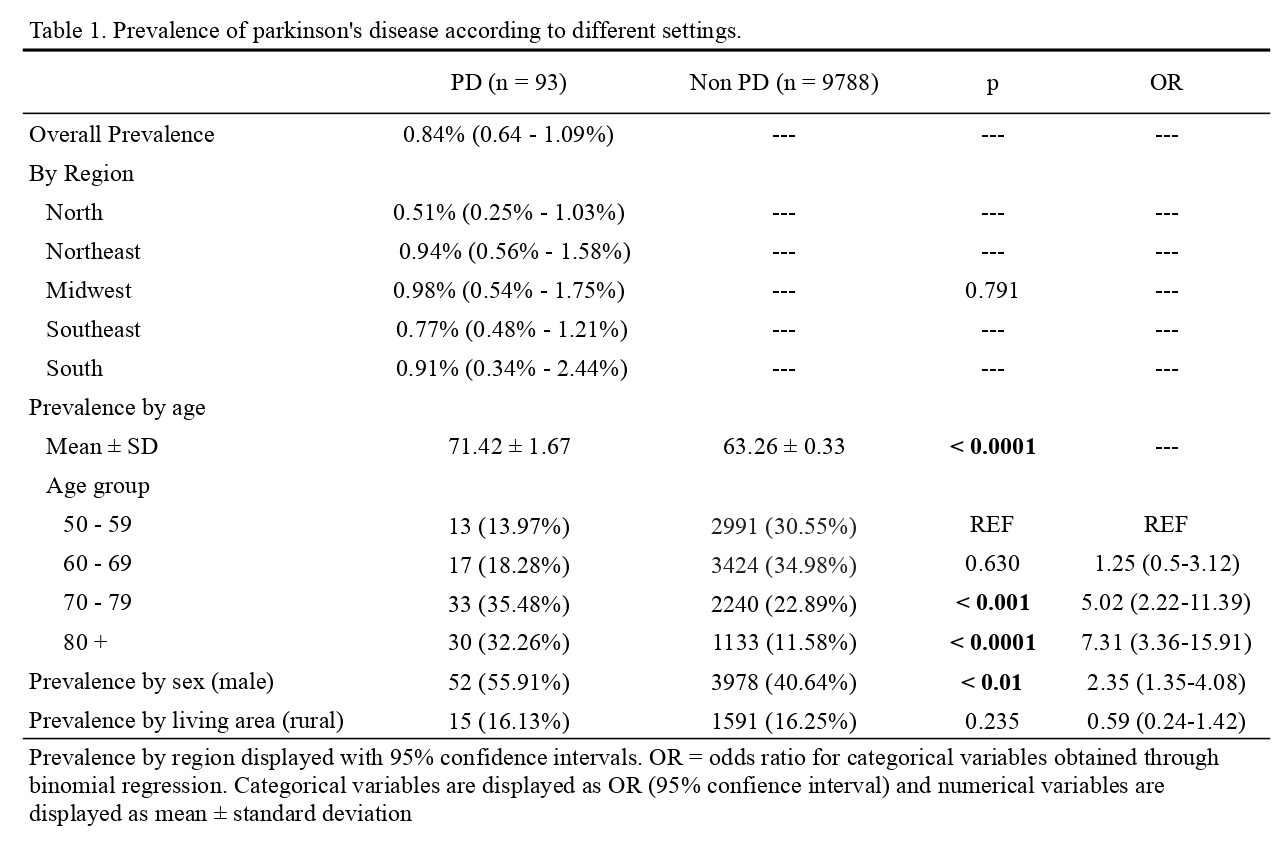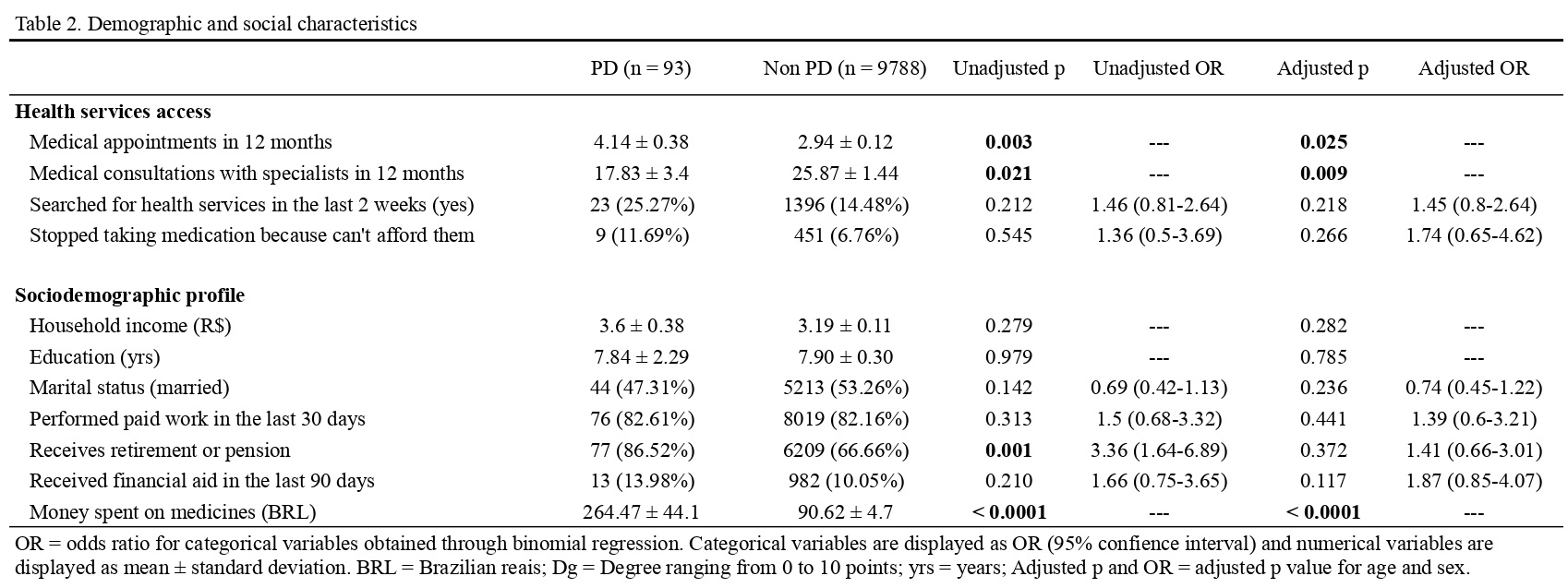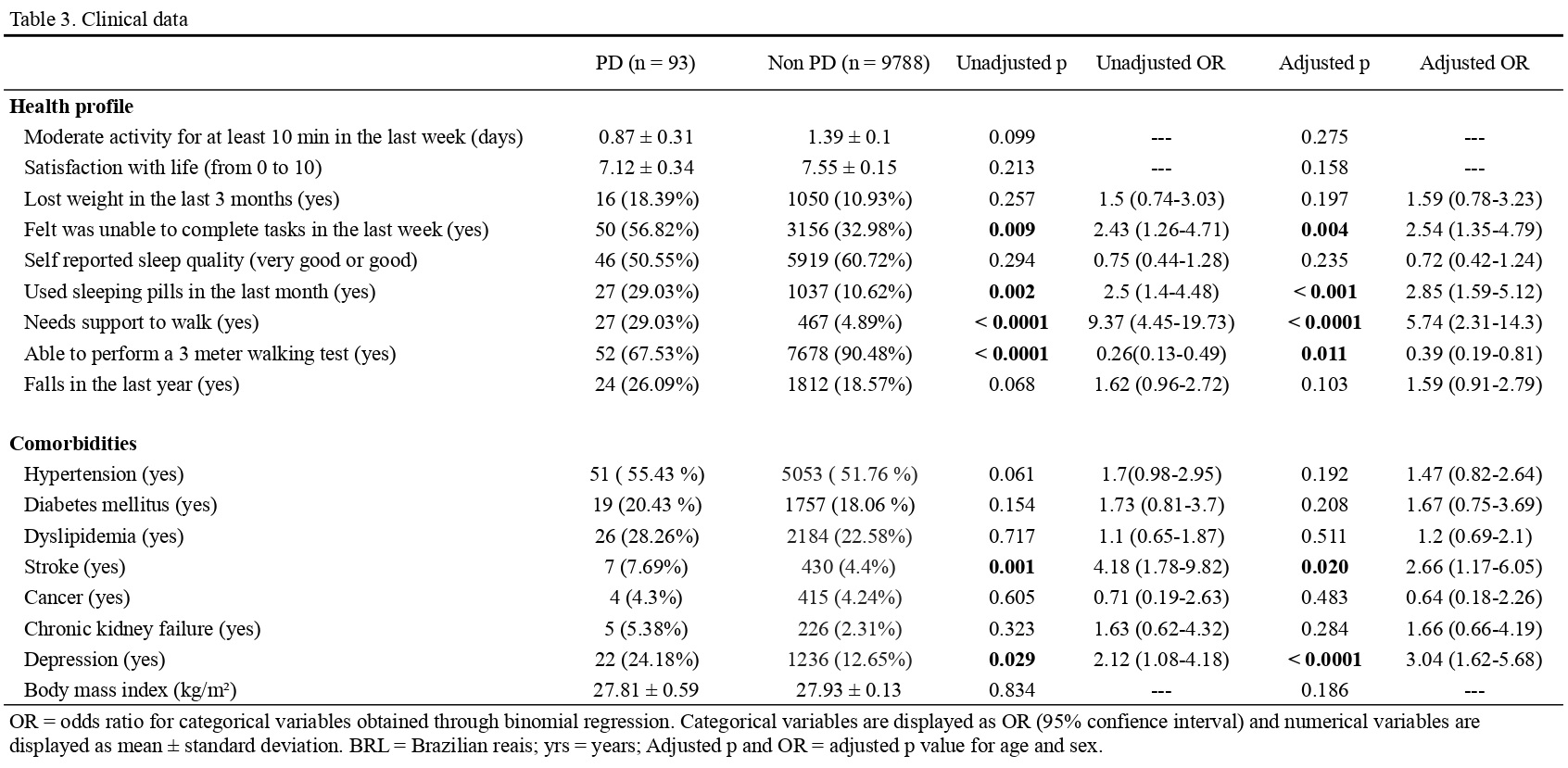Category: Epidemiology
Objective: To assess the prevalence, sociodemographic, and clinical characteristics of Parkinson’s disease (PD) among Brazilian older adults in a large nationwide representative cohort.
Background: The global rise in life expectancy correlates with increased PD prevalence [1], particularly in developing countries like Brazil, where data on the condition is sparse but crucial for evaluating healthcare access and the disease’s economic and clinical impact.
Method: We analyzed data from the Brazilian Longitudinal Study of Aging (ELSI-Brazil), a nationally representative cohort with complex sampling of the population ≥ 50 years. Data was sourced from the second wave of the study, assessing 9,949 participants from 2019 to 2021. We calculated the prevalence of self-reported PD both overall and divided by administrative region, age, sex, and living area. We also compared PD and non-PD populations regarding health services access, sociodemographic profile, and comorbidities. Statistical analyses utilized chi-square, t-tests, and binomial logistic regression, adjusted and non-adjusted for age and sex. Analyses were performed using R (V4.1.0).
Results:
The prevalence of PD among Brazilians aged over 50 was 0.84% (ranging from 0.64% to 1.09%). This prevalence showed no variation across different regions of the country or between rural and urban areas. However, it significantly rose in older age groups (p < 0.0001) and was higher in males (p < 0.01).
[table1]
Compared to non-PD individuals, PD patients had more medical consultations but limited specialist access in the past year, incurred higher medication costs, and were more often retired or on a pension.
[table2]
Additionally, PD patients were less capable of performing daily tasks and had inferior physical mobility. They required more sleep medications and exhibited a higher incidence of stroke and depression. Aside from receiving a pension, all other correlations were present even after adjusting for age and sex.
[table3]
Conclusion: In Brazil, PD prevalence aligns with that in developed countries, being higher among older individuals and males. PD patients face numerous challenges, including limited access to health services, increased medication costs, difficulties with physical mobility and specific comorbidities. Importantly, these disparities are not attributable to age or sex differences, indicating specific needs within this population.
Prevalence of PD according to different settings
Demographic and social characteristics
Clinical data
References: 1. GBD 2016 Parkinson’s Disease Collaborators. Global, regional, and national burden of Parkinson’s disease, 1990-2016: a systematic analysis for the Global Burden of Disease Study 2016. Lancet Neurol. 2018;17(11):939-953.
To cite this abstract in AMA style:
D. Teixeira-Dos-Santos, G. Magalhães Pereira, G. Alves Marconi, T. Hugentobler Schlickmann, AF. Schumacher Schuh. Parkinson’s disease in Brazil: prevalence and patient characteristics in a nationwide representative population-based cohort. [abstract]. Mov Disord. 2024; 39 (suppl 1). https://www.mdsabstracts.org/abstract/parkinsons-disease-in-brazil-prevalence-and-patient-characteristics-in-a-nationwide-representative-population-based-cohort/. Accessed January 1, 2026.« Back to 2024 International Congress
MDS Abstracts - https://www.mdsabstracts.org/abstract/parkinsons-disease-in-brazil-prevalence-and-patient-characteristics-in-a-nationwide-representative-population-based-cohort/



